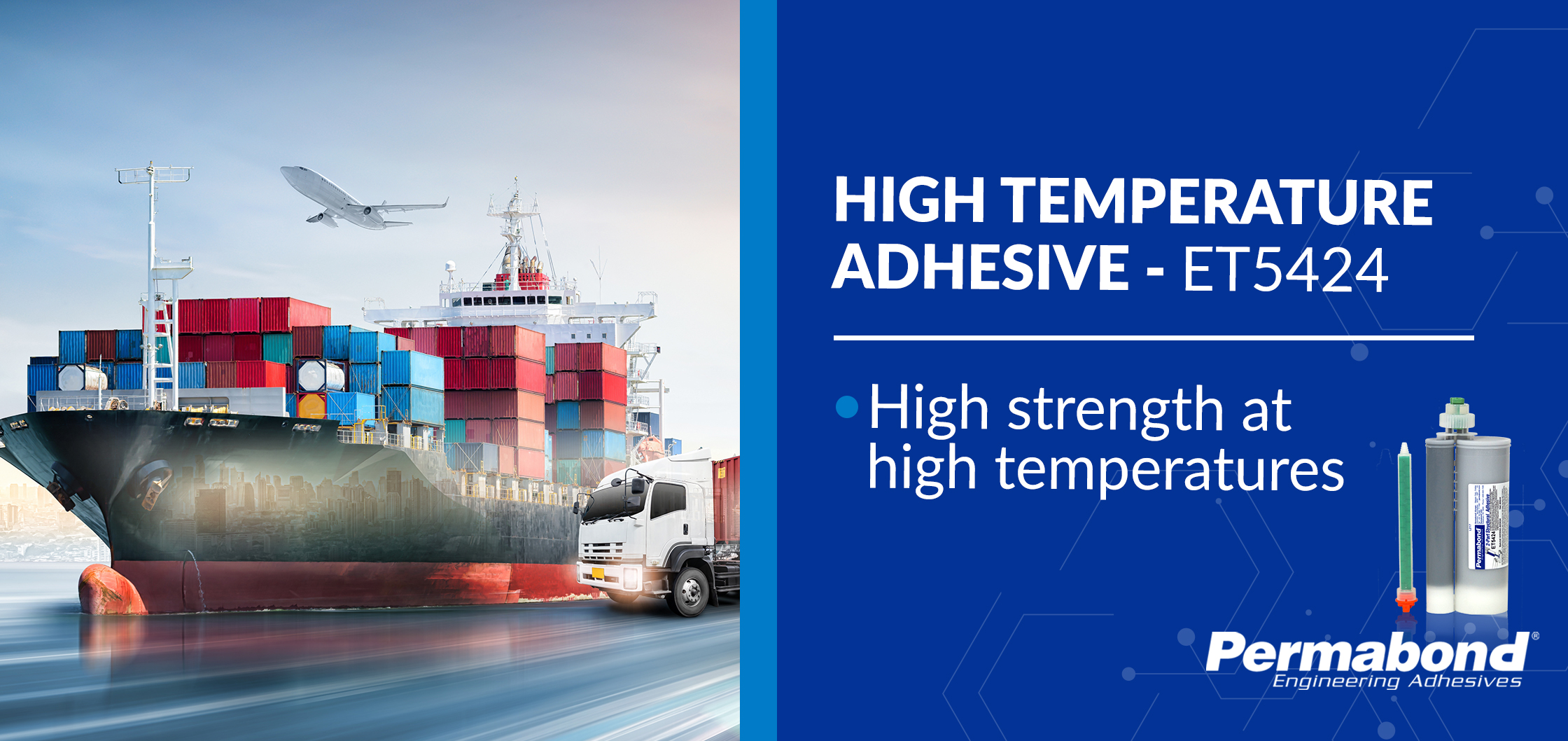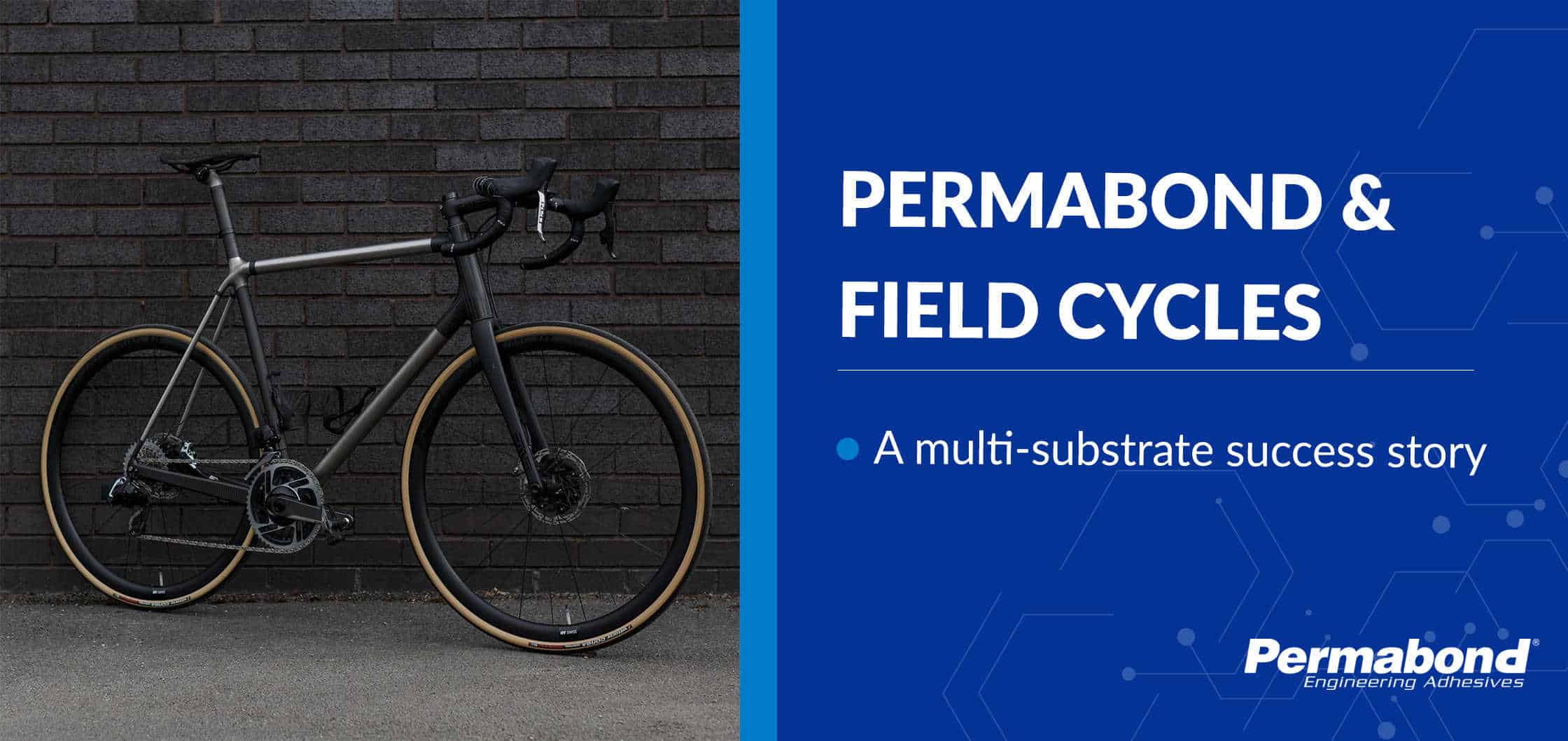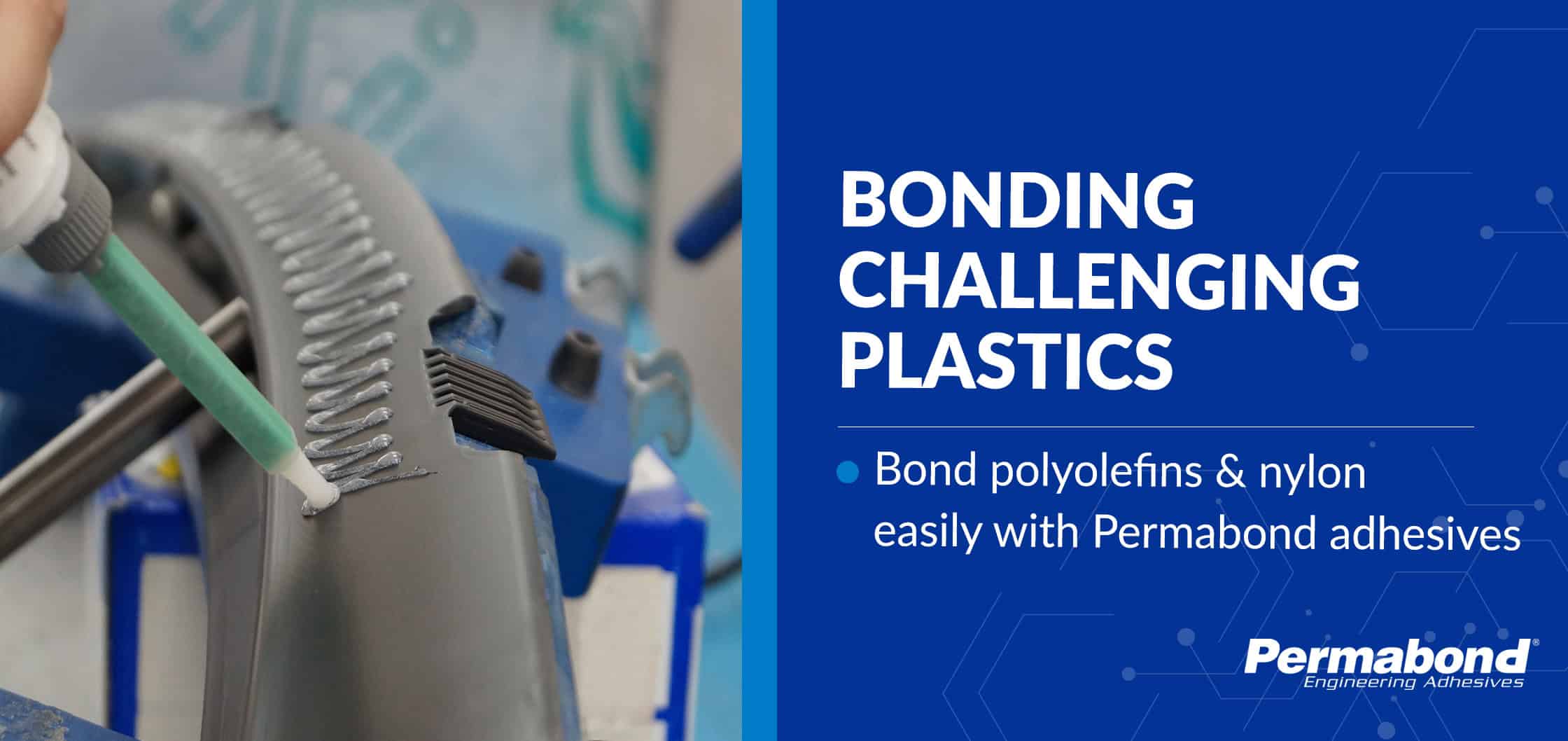Polypropylene plastic is a favourite substrate among goods manufacturers. It is low-cost, tough with some degree of flexibility and has excellent chemical resistance. Certain blends can even rival ABS (acrylonitrile butadiene styrene) in terms of performance. High-density and low-density polypropylene surfaces can be quite difficult to bond or print onto. This is due to low surface energy or poor “wettability” – typically only 29mN/m. To achieve “wetting” or adhesion, with most adhesives surface energy above 36mN/m is required).
Many goods manufacturers use welding techniques (e.g. friction welding, ultrasonic welding, lasers etc). As well as being expensive, welding is normally not suitable when bonding polypropylene to other substrate materials.
Can’t do Surface Preparation?
Don’t worry, there are industrial adhesive products available for bonding polypropylene without treated surfaces. Permabond has two new products TA4610 and TA4620 which have good adhesion to untreated polyolefins as well as other substrate materials.
Surface Preparation for Bonding Polypropylene
Due to the low surface energy of polypropylene, with any other adhesive, we recommend surface treatment before bonding. There are several ways of pre-treating surfaces for bonding polypropylene:
- Flame Treatment: This uses specialized equipment. It is important to have the set up optimised so parts are the correct distance from the flame and pass through at the correct speed; over-treating the surface will result in similar bonding results to untreated surfaces i.e. the adhesive will not stick! Be careful if manually attempting this because results will be inconsistent. Flame treatment is more suited to flat, uniform surfaces rather than complex shapes. Professional equipment can be quite bulky.
- Corona or Plasma Treatment: Good for components with intricate shapes. It involves an electronic discharge over the surface of the parts, which helps activate surface electrons and makes them more receptive to bonding. Equipment can be quite costly.
- Primer: Special chemical primers can be used to activate the surface for bonding. Permabond offers Permabond POP Polyolefin Primer – this can only be used in conjunction with a cyanoacrylate adhesive. This offers a simple solution for customers looking for an instant bonding solution.
After you increase the surface energy with treatment, it is ready for bonding. Remember: for consistent results, bond surfaces as soon as possible after pre-treatment.
For more information on bonding polypropylene or other industrial adhesives, please contact the Permabond technical team here.
Categories
Let’s Discuss Your Project.
"*" indicates required fields
Products
Technical Support

Permabond will help you select the right adhesive for your application.






